The 5th graders at Avocado Elementary were eager to hear about the upcoming research in Svalbard. We completed a lab activity which included looking at "core samples" and graphing their diatom content. From this the students concluded that the average temperature on Earth alternates between warm and cold periods. They tried on extreme cold weather gear and prepared "Take a Closer Look" questions. Thank you Mrs. Dement and students for having me in your classroom!
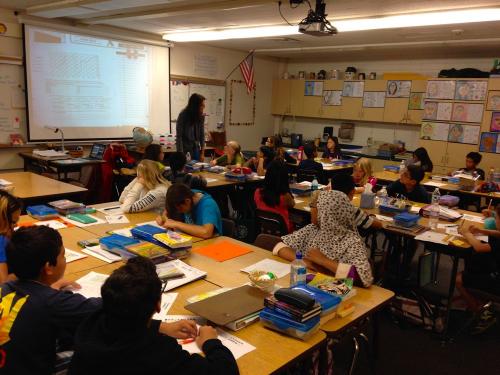 Fifth graders in Mrs, Dement's class at Avocado Elementary School learned about paleoclimatology.
Fifth graders in Mrs, Dement's class at Avocado Elementary School learned about paleoclimatology.
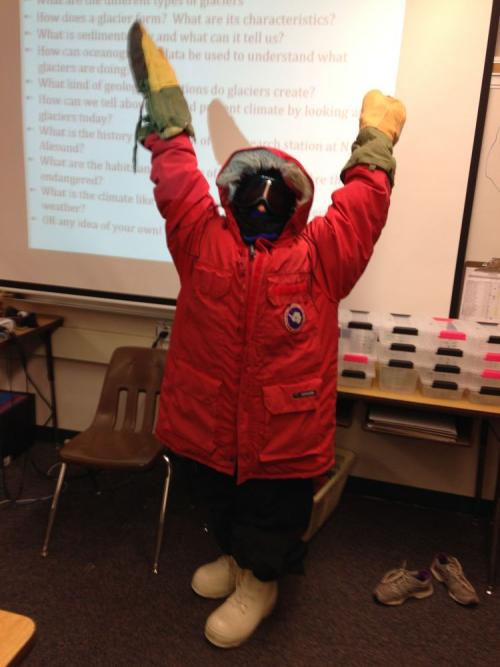 This student at Avocado Elementary is ready for some polar research.
Los Coches Creek Middle School, 6th grade, Mrs. Washer's, Mrs. Ferland's and Mrs. Freeman's Classes
This student at Avocado Elementary is ready for some polar research.
Los Coches Creek Middle School, 6th grade, Mrs. Washer's, Mrs. Ferland's and Mrs. Freeman's Classes
The 6th graders at Los Coches Creek also analyzed diatom content in core samples and discovered that from understanding what Earth's climate was like in the past we can know what is "normal" for Earth. By comparing this to current changes in climate, we can decide if something weird is happening and try to figure out why. They also enjoyed modeling the extreme cold weather gear and came up with some great "Take a Closer Look" questions. Thanks, 6th graders and don't forget to follow the expedition this summer!
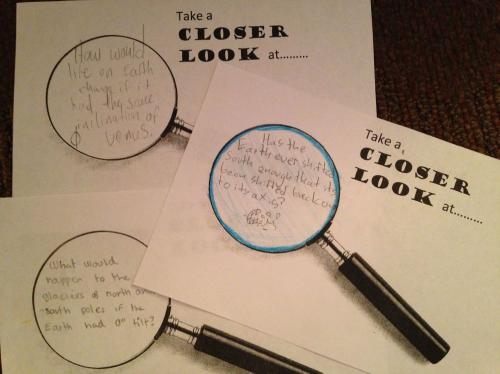 Analyzing diatoms in a mock core sample.
Analyzing diatoms in a mock core sample.
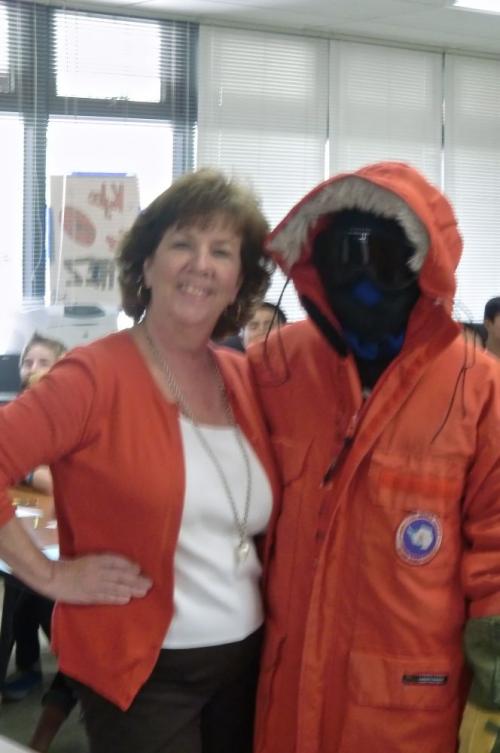 Mrs. Freeman with her 6th grade polar scientist
The Awesome 8th Graders: My Own Students
Mrs. Freeman with her 6th grade polar scientist
The Awesome 8th Graders: My Own Students
After learning about how proxy data informs us about past climate, the 8th graders analyzed sediment core and tree ring data to understand paleoclimatology. Following lessons on how current climate is changing, they got to Skype with the two lead scientists from the upcoming expedition! Dr. Ross Powell and Dr. Julie Brigham-Grette spent an entire day presenting to each of my five classes and took questions from the students. This was a wonderful opportunity for my students to get to talk to real scientists about cutting edge, relevant research on climate. Thank you so much to Dr. Powell and Dr. Brigham-Grette from all of us at LCC!
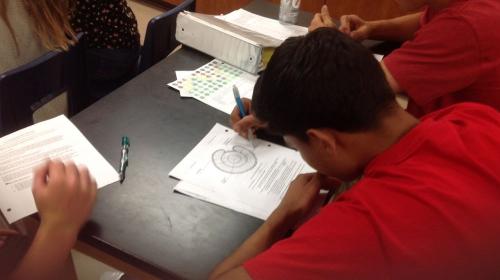 Looking at tree ring data to understand past climate
Looking at tree ring data to understand past climate
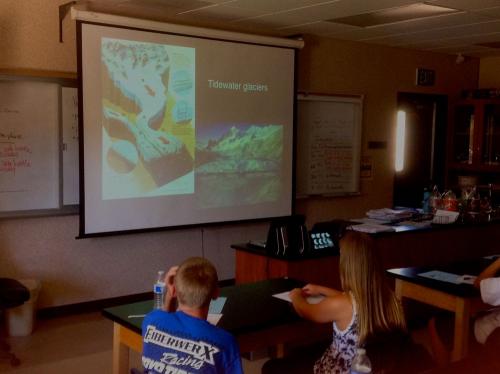 8th graders at Los Coches Creek Middle School got to Skype with Dr. Powell and Dr. Brigham-Grette
8th graders at Los Coches Creek Middle School got to Skype with Dr. Powell and Dr. Brigham-Grette
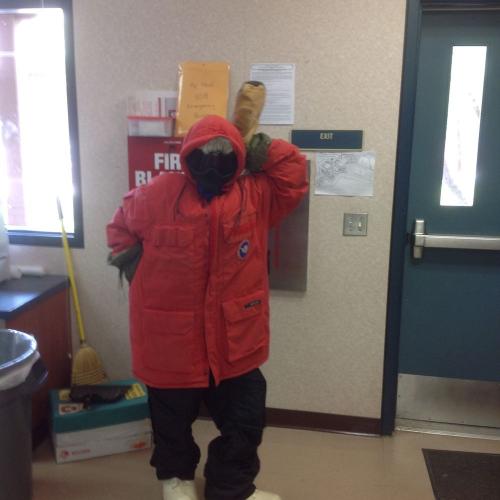 Extreme cold weather gear clowning
Take a Closer Look
Extreme cold weather gear clowning
Take a Closer Look
Here are some great "before the expedition" questions that I can answer now.
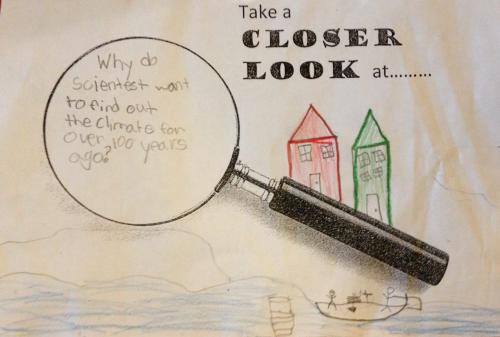 Why do scientists want to find out about the climate from over 100 years ago?
Why do scientists want to find out about the climate from over 100 years ago?
From Allen K. at Avocado Elementary School: "Why do scientists want to find out about the climate from over 100 years ago?" (I love how he included a drawing of the colorful buildings that make up the science station at Ny-Alesund.) Our thermometer records are very short; we only have about 150 years of data. To find out what happened before that we have to turn to proxies or "stand-ins" such as data from ice cores, sediments, tree rings and corals. But why do we want to understand what climate was like thousands or even millions of years ago? Because it helps us to understand what is normal for Earth and how the Earth works as a system. For example, we know that temperature and carbon dioxide levels rise and fall together. By understanding the past we can better figure out current climate and even make some predictions about the future.
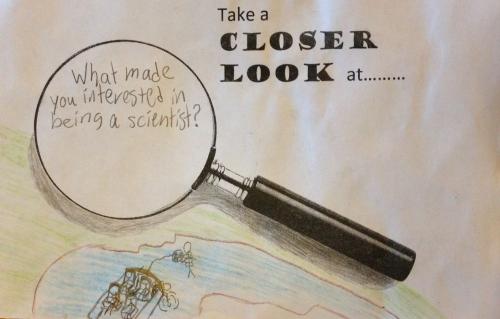 What made you interested in being a scientist?
What made you interested in being a scientist?
From Drake P., 6th grade, Los Coches Creek Middle School: "What made you interested in being a scientist?" (Check out his cool sketch of us in the boat.) I can't really remember a time when I didn't love science, which is basically just having a curiosity about the natural world. I remember collecting acorns when I was very little and having an interest in dinosaurs when I was in kindergarten. I enjoyed camping and identifying different trees and plants. In high school I loved biology and dissecting. So it was just natural to go on and study science in college and ultimately teach science. My advice is to stay curious and keep asking questions. This will make you a scientist too.
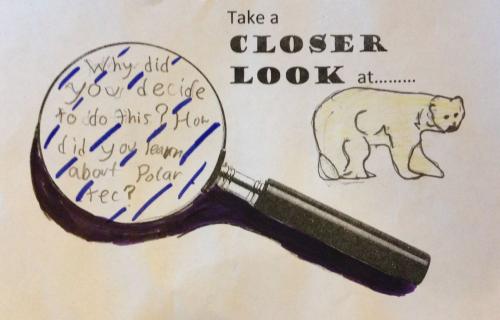 Why did you decide to do this? How did you learn about PolarTREC?
Why did you decide to do this? How did you learn about PolarTREC?
From Ethan K., Los Coches Creek Middle School: "Why did you decide to do this? How did you learn about PolarTREC?"
Believe it or not, I just ran across it online. I thought, "This looks cool" and submitted an application. The neat thing about my particular expedition is that it is an REU or Research Experience for Undergraduates. For more on this see my journal dated June 12. So there are opportunities like this for you as well. Work hard, get good grades and keep your eyes open!
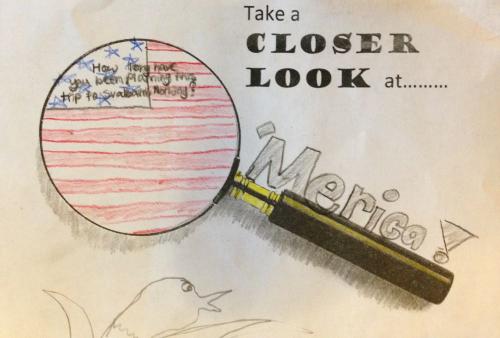 How long have you been planning this trip to Svalbard?
How long have you been planning this trip to Svalbard?
July 4th is coming up and Clay F., 6th grade from Los Coches Creek Middle School submitted a patriotic decorated question: "How long have you been planning this trip to Svalbard?"
I was selected in November and attended orientation in February. Since then I have been acquiring gear, talking to the lead scientists and trying to learn as much as I can.
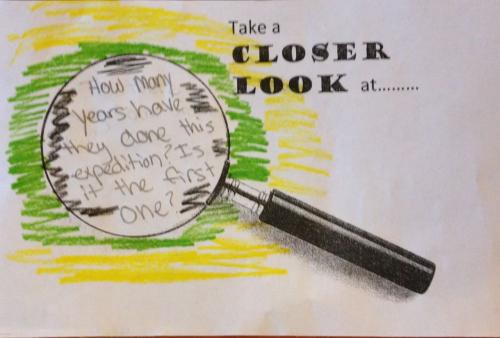 How many years have they done this expedition? Is this the first one?
How many years have they done this expedition? Is this the first one?
Finally, from Brady D., 8th grade, Los Coches Creek Middle School: "How many years have they done this expedition? Is this the first one?"
Expeditions in the same region, collecting similar data were conducted in 2005 and 2011. By repeating the data sets we can get a picture of how the area is changing and responding to a warmer climate.

